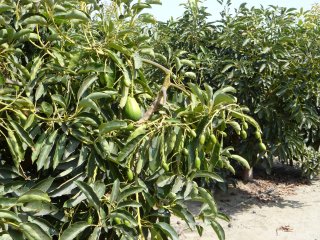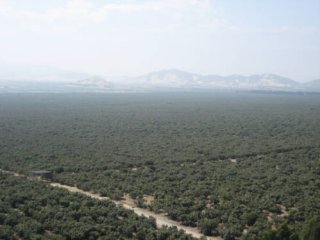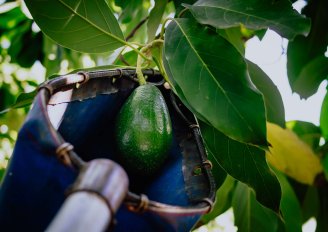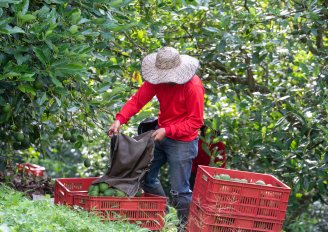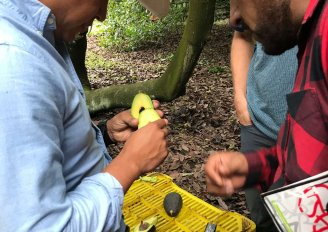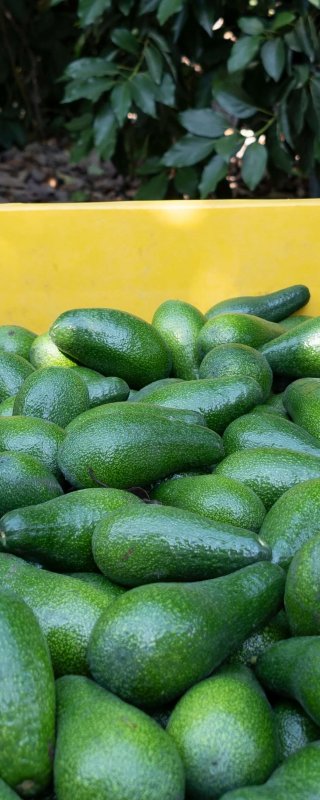
Harvest practices for avocado
Proper picking of avocado is a precondition to being successful in the rest of the supply chain. The performance of the pickers is therefore critical to deliver a good quality product. First of all, picking at the right maturity is important to develop a satisfactory taste. Picking and further handling must be done carefully to avoid bruising and other damages to the product. The use of clean and suitable materials such as harvest crates also serves this purpose.
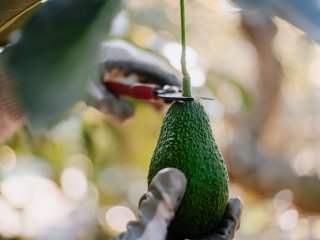
Harvest of avocados
Avocados are climacteric fruits. This means that, once mature, they will ripen further after harvest. Avocados are often harvested when they are still green and firm, so they can reach distant markets. On the other hand, they must be sufficiently developed to be able to ripen and reach optimum quality later in the supply chain. Determining the right harvest moment is therefore important for the eating quality and marketability of the avocados. Good training, instruction and monitoring of individual pickers can ensure a good starting quality.
Attention points when harvesting avocados
"It is important that avocado harvesting teams/ farmers receive training in harvesting procedures and fruit maturity determination."
